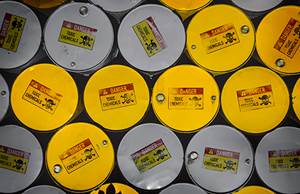Take Steps to Make Cleaning Changes
A well-designed and carefully maintained cleaning process is essential to build and assemble quality product and to expand the customer base.
The time has come (gulp) to change a cleaning process. Some reasons can be that business is good, but the current surface prep method is labor intensive; the cleaning equipment is being held together with duct tape and is ready to be retired; the product line has changed; customers demand more; lower levels of allowable residue or changes in acceptable surface finish require critical cleaning or precision cleaning processes. So, the cleaning team evaluates options, runs tests, and weighs the options. The team is poised to make a decision.
In the July/August 2009 issue of Process Cleaning Magazine, we introduced an analogy between manufacturers facing a decision on process change and a group of tiny penguins emerging from the Australian surf at dusk. To survive, they have to change locales, crossing a beach to reach their nests hidden in the dunes while braving marauding gulls and assorted predators. Forward movement begins. Suddenly, although there is no apparent danger, the leader dives back into the sea, followed by the waddle (a group of penguins). They repeat this action many times until they build the courage to get to their nests.
Penguins crossing a beach and manufacturers looking to change the cleaning process must make prudent, prompt decisions. For manufacturers, making rash decisions can disrupt production and even result in shutdowns. Avoiding the decision to choose a new process also has risks. A well-designed and carefully maintained cleaning process is essential to build and assemble quality product and to expand the customer base. Consider the risks of indecision, including the impact on profits and on customer satisfaction.
Choose a cleaning processes that adds value to the customer. Define product quality and decide on and invest in a quality cleaning process. An effective cleaning process can reduce costs. It is short-sighted to respond to economic or regulatory issues by decreasing or eliminating cleaning. If the assembler must absorb the costs of cleaning heavily soiled product, they might switch to a supplier providing cleaner product.
Risks are situational and they change. For penguins, the beach, the weather and the predators change. For manufacturers, the variable risks include regulations, the competition and new technology. Technology is advancing at a rapid pace; manufacturers that don’t adapt will be left behind. Cleanliness requirements for medical devices and aerospace or automotive components are tighter. Emerging technologies, including 3D printing and driver assistance, present new or stricter cleanliness challenges. Supply chains are complex. Faced with economic and regulatory restrictions, decision paralysis can set in.
One manufacturer who supplies high value coatings to the aerospace industry navigated the risks of cleaning process change. The team selected a chlorinated solvent as having the most reliable cleaning performance. Given the plethora of environmental regulations in Southern California, the manufacturer involved cleaning equipment suppliers and regulators to assure that a well-contained cleaning system would be acceptable. After almost two decades, the cleaning process is still reliable, and the company receives kudos from customers and regulatory agencies.
In another example of a successful process change, a supplier of optical sensors for military applications was unable to resolve a cleaning problem. Engineers championed new equipment; process chemists thought a new cleaning agent was the answer. The cleaning process didn’t work because the proposed cleaning chemical did not work with the proposed cleaning process. The group finally assembled a team and members actually communicated. The key to making a decision that solved the problem was realizing that cleaning process change has to be coordinated, that the cleaning agent and cleaning equipment has to be considered together. Once that happened, process change moved forward.
Decide and act! Successful manufacturers do not get paralyzed by the concept of change. Critical cleaning enhances quality and productivity, and it is a value-added activity. Manufacturers that adopt superior cleaning processes have been known to use cleanliness to place their products at a competitive advantage. Consider the costs, risks and benefits of cleaning process change. But by all means, make a decision and move forward.
About the Author
Ed Kanegsberg and Barbara Kanegsberg
Barbara Kanegsberg, “The Cleaning Lady,” and Ed Kanegsberg, “The Rocket Scientist,” help companies achieve value-added cleaning processes. Contact them at BFK Solutions LLC, 310-459-3614, info@bfksolutions.com.
Related Content
PMTS 2023 Product Preview: Parts Cleaning
Learn about some of the latest parts cleaning solutions that will be on display at PMTS 2023.
Read MoreEnvironmentally Friendly Model 550 Versatile Parts Washer
PMTS 2023: This washer is useful in a variety of applications, including tool rooms, maintenance operations, low production and precision cleaning.
Read MoreParts Cleaning Sector Shifts Energy Toward Regulatory Changes
With changes in EPA regulations regarding the use of some popular cleaning fluids, cleaning suppliers and end users are readjusting business strategies and/or cleaning processes to meet new requirements.
Read MoreKyzen Solvents Provide Safe Parts Cleaning
The SLV901 and SLV803 solvents are formulated to maintain cleaning efficacy while providing a safe, environmentally friendly alternative to processes that use PFAS and HFCs.
Read MoreRead Next
Do You Have Single Points of Failure?
Plans need to be in place before a catastrophic event occurs.
Read MoreEmerging Leaders Nominations Now Open
Here’s your chance to highlight a young person in your manufacturing business who is on the path to be a future leader moving your company forward.
Read MoreA Tooling Workshop Worth a Visit
Marubeni Citizen-Cincom’s tooling and accessory workshop offers a chance to learn more about ancillary devices that can boost machining efficiency and capability.
Read More











.jpg;maxWidth=300;quality=90)












